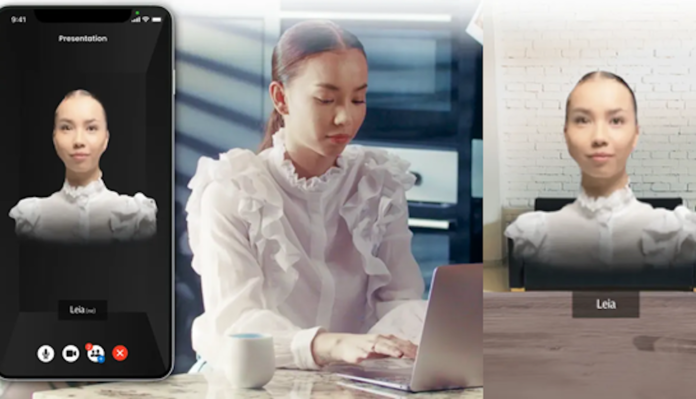Conjuring up 3D images would be an exciting use of 5G
Space age three dimensional phone calls could soon be with us in the time it takes to say “Seance”. Deutsche Telekom (DT), Orange, Telefónica and Vodafone have held a series of deep tech experiments with Matsuko in which they tried to hold calls with people on the other side. The telcos wanted to see if summoning up an image could be as simple as holding hands around a table and ‘interconnecting their deployments.’ Matsuko CEO Matus Kirchmayer described the objective of the initial pilot was to deliver a one-to-many holographic experience and, ultimately, to achieve ‘stunning realism’.
The upshot is that Holograms could feasibly be created using the selfie camera of a smartphone to capture and transmit a live three-dimensional image of a person. The image passes through to the other side after being processed through an advanced 3D rendering engine. It then delivers a ‘virtually there’ immersive experience and displays it in a virtual environment or overlays it onto a real-world setting, using virtual or augmented reality glasses. Walking towards the light, Karine Dussert-Sarthe, Executive Vice President of Marketing and Design at Orange Innovation, said that is a first but meaningful step towards the metaverse.
If successful the companies involved in the trials plan to invite their customers to take part. Sven von Aschwege, XR Topic Lead Global Devices Partnerships at Deutsche Telekom, said that the collaborators are on step closer to making that happen. The trial platform would be 5G networks, whose high speed and bandwidth, coupled with minimal latency, have a chance of solving the snags that have so far confounded would be creators of realistic 3D imagery. Having successfully completed the first phase of the collaboration, the engineers will strive to improve the underlying technology, namely on quality of service. They are currently examining the potential for broadcast-like delivery, so that entire events or presentations might be conducted virtually with, they hope, ‘stunning realism’. Alex Froment-Curtil, Chief Commercial Officer of Vodafone, knocked twice to confirm that ‘the metaverse brings a new dimension to the future of connectivity’.
Future applications could include face to face or small group encounters, helping people connect more effectively, both literally and figuratively, in consumer and business settings. The key enabler of realism is the use of mobile edge computing technology. As with seances and other summoning of apparitions, there needs to be a supporters next door or very nearby. Distributed networks could bolster the requisite signal strength and application intelligence so that local events can be created away from the network core. The inverse proportion between latency and bandwidth and the possibility for altered reality experiences will be a guiding principle on the achievability of Holographic calls.
According to a statement the results have been encouraging and network related impediments to holographic continuity have been resolved, while the colour and texture resolutions have increasingly been realised. A smartphone is good enough to host the call without the need for a video headset will enhance the immersive experience. Daniel Hernández, the VP Devices & Consumer IoT at Telefónica, said: “We are confident that in the near future, we will be able to offer our customers a new way of communicating.”



